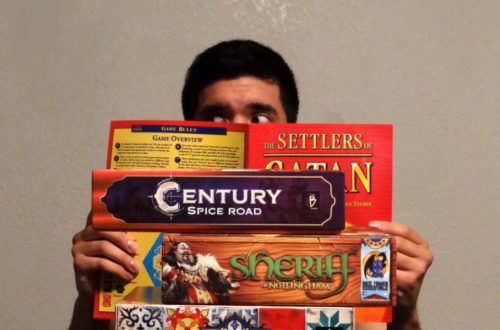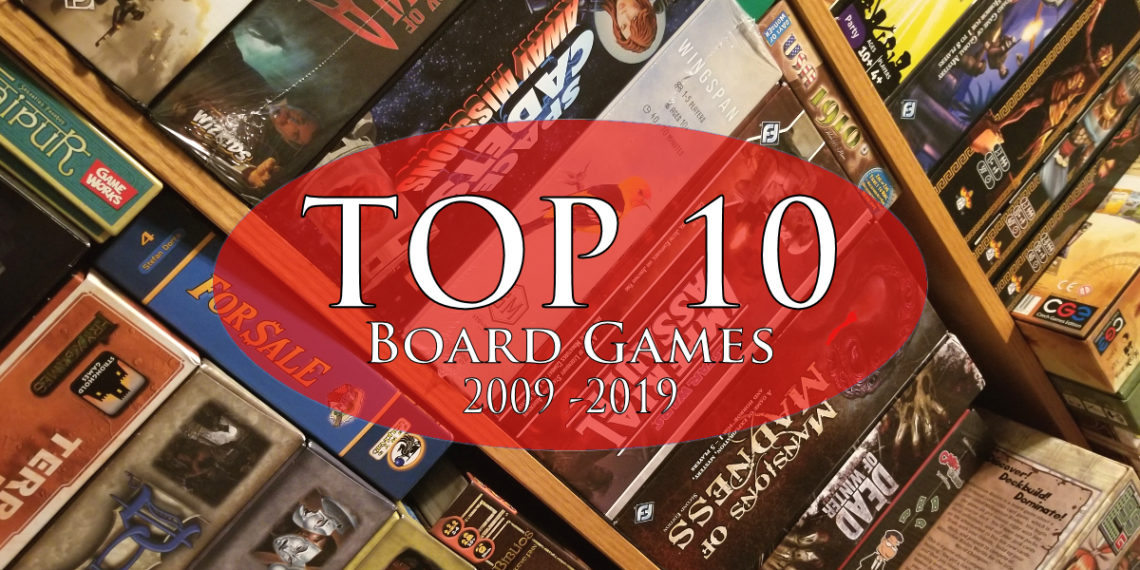
My Top 10 Board Games of the Decade: 2009 – 2019
Some years ago, I made a purchase that would forever change the social aspect of my life.
It all started in a podcast I was listening to while at work, an audio show called DLC. As the abbreviation implies (DownLoadable Content), the podcast’s topics and themes covered almost anything video game related. But occasionally, the show would feature a segment called “Tabletop Time,” where host Jeff Cannata would gush at length about the latest board games. Except, these board games were not the usual mass market games, like Monopoly or Trivial Pursuit. No – these were board games of a different genre altogether, an exploding realm of tabletop known as “Euro” or “Designer” board games.
Instead of placing their focus on “take-that” mechanics which generally result in players wanting to flip the game board, these designer board games emphasized strategy, high quality components, and beautiful artwork. (If you’re interested, this article does a great job of explaining the difference between designer board games and mass market board games)
I was somewhat familiar with designer board games by that point, having played some of the more widespread titles like Catan. But DLC sparked a desire to really explore the hobby, as I gradually became convinced that there was a whole wide world I was missing out on. After listening to several Tabletop Time segments of the podcast, I gave in and made my historic acquisition: a strategy game called Lords of Waterdeep. As you might have guessed, the game kicked off a serious obsession, not unlike my other collections.
Since then, I’ve owned and/or traded away no fewer than 150 board games, and played dozens more at other gaming groups. I myself have hosted many a game night, with a variety of different groups ranging from introverted to downright gregarious. The beauty of board gaming (among other things) is its ability to bring people together. Hence, the hobby has cemented itself as one of my favorite activities to do with friends.
In my opinion, nothing quite compares to the in-person experience of strategizing, handling physical components, and interacting with others.
Putting this ranking of top board games together was indeed a massive challenge, as on any given day, certain games could easily creep into the list. But based on frequency of plays, popularity with my game groups, and a host of other factors, I believe I’ve managed to whittle it down.
Note: This list aggregates the top games I’ve played this decade, not necessarily those that were released in this time frame. I felt this was more appropriate, as my official foray into this hobby began in this decade, not so much prior.
That being said, I’m excited to share with you my Top 10 Board Games of the Decade.
10. Dixit (2008)
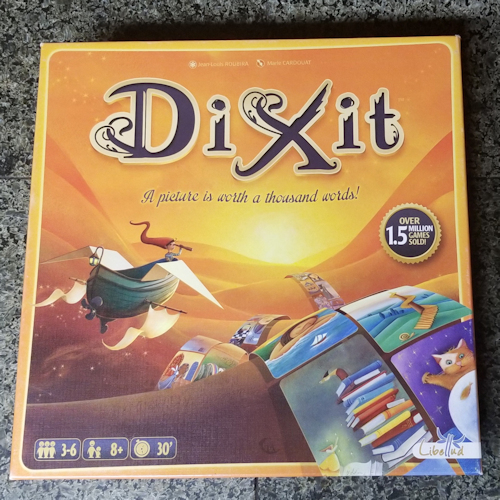
Rounding out my top 10 is a great little game called Dixit.
Whenever I am introducing new players to the hobby of designer board gaming, this is one of the top games to hit the table. With dozens of cards featuring abstract artwork not unlike something you’d see from Picasso, Dixit always elicits tons of laughs from anyone actively playing or watching.
What I love about Dixit is how different each game is depending on who is seated at the table. The core boxed set includes 84 cards, but each card can mean something completely different from one person to the next, adding a huge amount of replayability to the game. And if you get tired of using the same deck, there is always the opportunity to purchase one of the many available expansions, which add a slew of fun new cards.
Teachable in 5 minutes and playable in 30, this is an easy recommendation for both new and experienced players looking for a low-hurdle party game that plays up to six players.
9. For Sale (1997)

Similar to Dixit, For Sale is another quick-and-easy board game that is comprised of nothing more than two sets of cards.
Each card from the first deck includes one of thirty unique places of habitation, with Card 1 representing the least desirable housing arrangement (a cardboard box), and Card 30 representing the most desirable (a satellite from outer space). With a certain amount of money tokens, players can then bid on which card they want, using different strategies to bluff their way into getting a better card, or taking low-numbered cards in hopes of getting a better deal later.
Then once all the houses are auctioned off, the second deck comes into play, which are all comprised of money in different denominations. Here, players then sell off their properties for each set of revealed money cards, with the highest property revealed receiving the highest money card, second-highest house receiving the second-highest money card, and so on.
What makes this particular game so much fun is the feeling of suspense and excitement that precedes every round of auctioning. “Will they pass or will they raise the bid?” I’ve played this game more times than I can count, and it is one of the few I’ve actually bought a second copy of because the first was too worn for further use.
With its portability and accessibility to new players, For Sale is a vital addition to any board game collection.
8. 7 Wonders (2010)
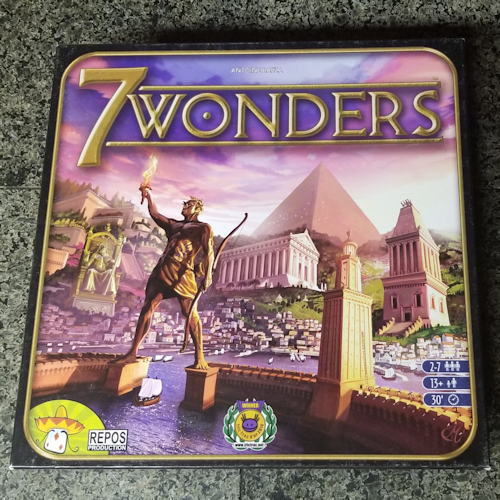
Antoine Bauza is one of the most prolific board game designers of our time. With an illustrious career spanning well over a decade, the man has created some of the best-known titles in the current designer board game era, my favorite of which is 7 Wonders.
7 Wonders allows each player to control one of the great cities of the ancient world, which they build upon using a variety of resources and points that are generated through different cards.
The game is structured around a mechanic known as “card drafting,” where players begin with a hand of seven cards, pick one to add to their city, and then pass the deck to the next player in sequence. Then they select a card from their new hand, before passing that hand to the next player. Once the hands of cards are depleted, the process begins again in two additional phases known as “Ages.” Then, at the end of the Third Age, the player who generated the most points from the cards they played is declared the winner.
What keeps my group and I coming back to this game is the large amount of variability there is in generating points. One player may choose to go after science, and collect the cards with similar symbols to double (or triple) the point value. Others may elect to go after combat cards, and attack their neighboring players to raise their own point value, at the expense of others reducing theirs (unless they fight back).
There is a fair bit of iconography that may seem daunting to new players. But after the first round or two (which, to be fair, are generally the slowest for any game), the symbols will make a lot more sense, and make for games that take no longer than half an hour.
Thanks to its many available strategies, relatively quick gameplay, and allowance for up to seven players to participate, 7 Wonders is a board game that sees regular usage. I highly recommend the Leaders and Cities expansions for even more replayability!
7. Lords of Waterdeep (2012)
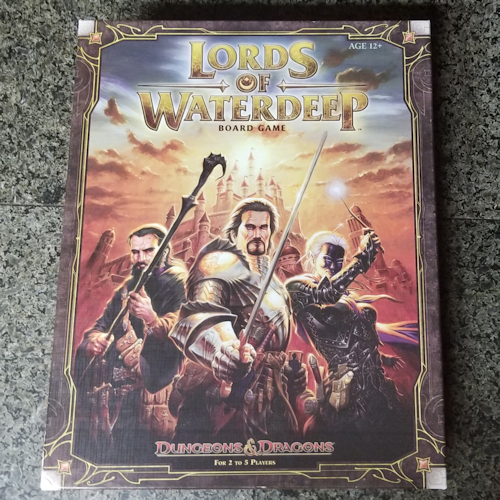
As noted in my intro, Lords of Waterdeep has a special place in my heart for being the first designer board game I had ever purchased. Not to mention, one of the few I still have in my collection since the beginning of my tabletop obsession.
At its core, Lords is known as a “worker placement” board game. Each player has a tableau comprised of a personal board and several meeples. During a round, players take turns placing one of their meeples on an unoccupied spot of the board (of which there are many), each of which provides different benefits.
Oh, and did I mention the fact that the theme is based on Dungeons and Dragons? Tabletop enthusiasts will recognize Waterdeep as being a well-known location from the role-playing game. I myself don’t have too much of a background with DnD, but the high fantasy theme complements the game well. The aforementioned benefits that are derived over the course of the game can be redeemed to complete quests. These quests, in turn, are not unlike something you’d see in a typical DnD campaign or video game, with great artwork and optional exposition to boot.
Lords of Waterdeep, like 7 Wonders, is a great medium-weight game that hits the table more often than not, thanks to its intriguing artwork and approachable mechanics. While the core game is fantastic, the expansion Scoundrels of Skullport further refines the experience by adding a risk/reward mechanic.
6. Castles of Burgundy (2011)
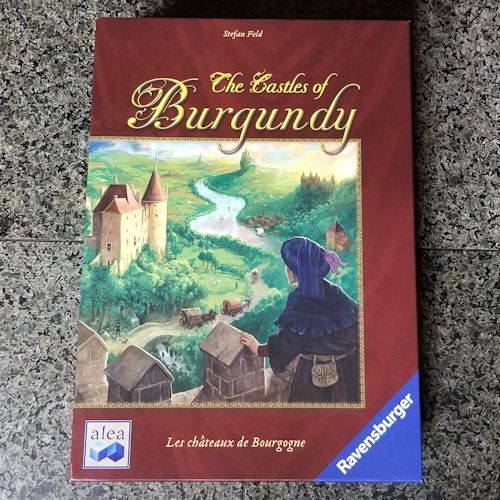
One of my least favorite board game components is, believe it or not, the die. This is a bit ironic, given that dice are almost the posterchild for board games as a whole. Being one that prefers strategy to randomness, I’m not particularly fond of leaving my outcome to chance.
Perhaps it’s my many years of playing Monopoly that has sullied my perception of them.
Thus, it may surprise some that Castles of Burgundy made this list, as the euro game practically has its mechanics built around dice. However, the way Castles utilizes these components is unlike anything I’ve seen before. Every turn, players are rolling their own pair of dice. They then have several options on how to spend their dice outcomes, as different numbers will allow different actions, depending on their result.
Yes, there is a certain element of chance involved, but this is somewhat mitigated by the variety of strategic options the players have at their fingertips. Throughout the game, players are tasked with building out their “kingdom,” which are comprised of hex-shaped tiles that are obtained every turn. The dice-based actions provide access to different types of tiles, each of which provide different benefits, and are themed accordingly (castles, mines, farms, etc).
My favorite aspect of Castles is simply how addicting the game is. So much of game is centered around point acquisition, and there is something inherently fun about adding hexes to your growing kingdom, and bumping that point marker up every turn.
5. Dominion: Second Edition (2016)
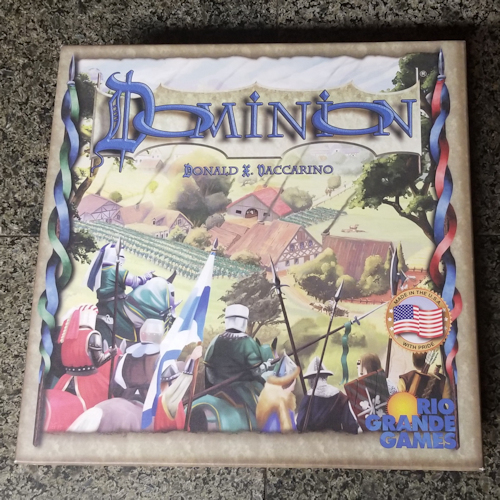
Ah yes, a classic.
Dominion is single-handedly responsible for kicking off a whole new genre of board games in the form of deck builders.
And in my opinion, it still embodies this genre the best.
To those not too familiar with deck building, I really can’t explain the game any better than BoardGameGeek:
“In Dominion, each player starts with an identical, very small deck of cards. In the center of the table is a selection of other cards the players can “buy” as they can afford them. Through their selection of cards to buy, and how they play their hands as they draw them, the players construct their deck on the fly, striving for the most efficient path to the precious victory points by game end.”
The core Dominion box includes 25 “Kingdom Card” types, but only 10 are ever used in a game. Each set of Kingdom Cards offers a unique benefit to the player that purchases them. Thus, there is truly a tremendous amount of variety with the nearly infinite combinations of 10 Kingdom Card sets that can be chosen every game.
And we haven’t even gone into considerable number of expansions that exist for the deckbuilder, each of which add even more Kingdom Cards and mechanics.
Dominion is a dang near-perfect game with virtually limitless options for variability. I feel like I’m discovering a new strategy every time this hits the table, which is remarkable for a game that is composed of nothing more than 500 cards.
4. Blood Rage (2015)
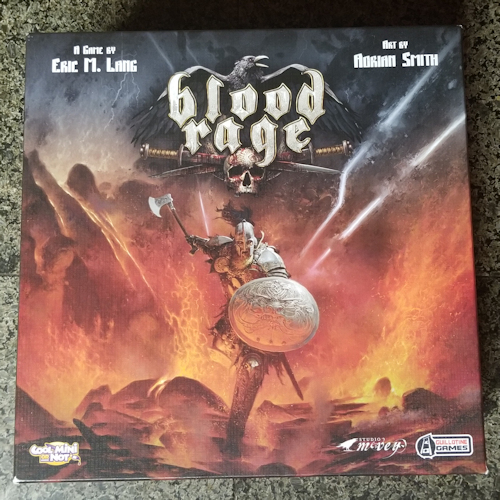
Do you want a game like Risk that is much more balanced, rewards strategic actions, and plays in half the time?
Look no further than Blood Rage.
Designer Eric Lang has really made a name for himself in the board game space with a number of stellar releases, but I always keep coming to this title time and time again. Blood Rage nails its Nordic theme with “dudes-on-a-board” type mechanics that involve the threat of impending battle and conquest.
Each round or age (of which there are three) kicks off very similar to 7 Wonders: a card drafting phase where players select a hand of cards based on the strategy they seek to employ. Then comes the action phase, where the players carry out their strategies. Generally, this entails placing detailed Viking miniatures on the board (representing Midgard), and having them interact with the various regions or with other player’s armies in a variety of ways.
What is so great about this game is how viable very different strategies can be. Sometimes, with the right card in hand, losing a battle can actually play to your favor, garnering you more points in the end game. I once played a game where an engine I built with my cards rewarded me multiple times over by destroying my own ships repeatedly.
Blood Rage takes the notion of Risk’s territory control, and improves on it exponentially with multiple layers of strategy. Few things are more exciting in tabletop than having all 4 players’ armies battle it out for the desirable center region of Yggdrasil.
3. Gloomhaven (2017)
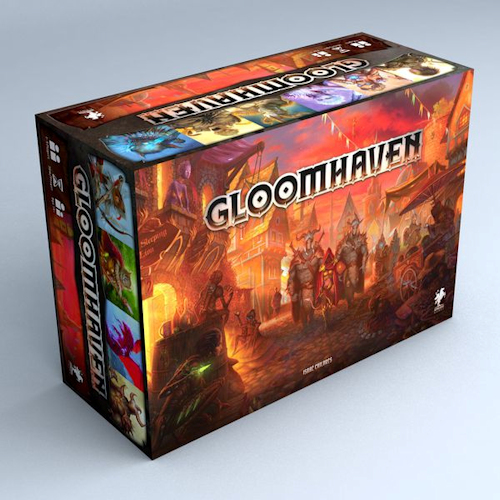
As mentioned above, I had gone most of my life without ever taking part in a classic tabletop RPG such as Dungeons and Dragons. One of the main reasons for this tragic gap in nerdy activity was because of how difficult it was to find anyone willing to be a Gamemaster/GM to spearhead a campaign.
Gloomhaven, in many ways, functions as a self-contained GM. The rulebook provides lush backstory to the characters that players control, and consequences unfurl for the decisions that are made every game. Astute participants will note that it’s definitely not a 1-1 comparison between Gloomhaven and DnD, with the former more focusing on mechanics and strategy (board game) and the latter on story and role-playing (tabletop RPG). However, this is still a great kick-off point for gamers looking to fill the void and get into a more lore-based experience in the absence of a good GM.
With a lot of moving parts, Gloomhaven is a meaty experience. It’s cooperative, so players will work together to defeat monsters and complete scenarios (thus, it’s recommended to use the same group over the course of the game’s 95 scenarios). In traditional linear fashion, each scenario builds on the previous one, upgrading the characters and progressing the story along the way. In fact, it might be a more apt comparison to say that Gloomhaven is almost like a video game translated into board game form. It’s hard to really explain this game to someone who’s never played it, evidenced by my lackluster attempts at breaking it down.
The bottom line is this: If you love the dungeon-crawling experience either in video game or tabletop form, have a dedicated group of friends that can work together, and love a strategic high-fantasy romp with story elements: Gloomhaven is your cup of tea.
2. Puerto Rico (2002)
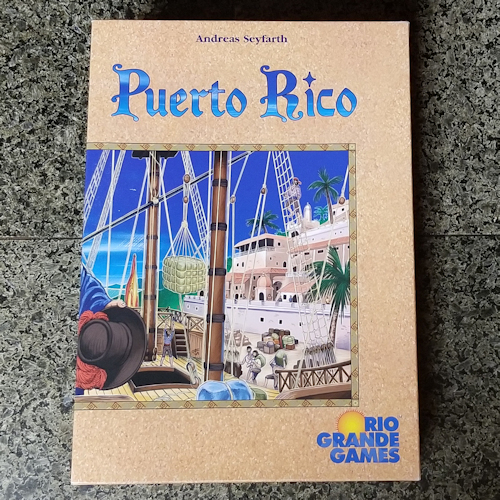
Admittedly, at first glance, Puerto Rico is one of the most drab board games I’ve ever seen. The artwork is very plain, and the title of the game gives little to the imagination.
But if you can look past these cursory drawbacks, Puerto Rico is an absolute masterpiece.
Thematically, players take the role of colonial governors growing their own plantations on the island nation of, you guessed, Puerto Rico. Like many games, the goal is to amass the most victory points by the end. But it’s how you get these points that makes things interesting.
Fundamentally, this is an “action-drafting” game where players select a role (such as Captain or Builder) that allows them to do a specific action for the current round. This action is then optionally carried out by all players, not only by the one who triggered it.
For example, if the main player selected the “Builder” role for his or her turn, everyone else may build as well, with a bonus going to the player who originally selected the role. Because there is no hidden information (IE everyone’s plantation is publicly viewable by all other players), this allows for some great strategic opportunities. While it might seem like a good idea to choose one role initially, I may change my mind when I notice that it may give the next player the upper hand.
Also of note is that the fact that there is no dice. In tandem with almost no hidden information, this makes for a game that is nearly 100% dependent on player strategy and decisions, rather than leaving things to chance.
Thus, I’m a fan.
Puerto Rico is so much more than meets the eye, and one of the few board games I can play again and again and still love it every time.
1. Cosmic Encounter (2008)
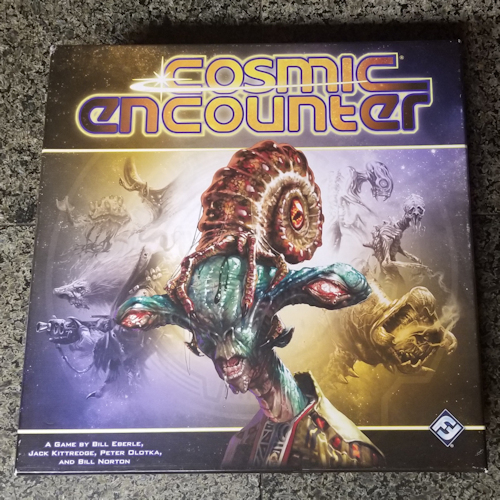
Aliens. Alliances. Betrayal. Negotiation. Special powers.
This game has it all.
Okay, maybe not everything. But Cosmic Encounter contains all of my favorite elements of board gaming, and presents it in one tidy package. While some of the previously mentioned games such as For Sale and 7 Wonders have hit the table many a time, none of them even come close to the total playthroughs I’ve done of Cosmic Encounter.
Let me tell you why.
In Cosmic Encounter, players are tasked with playing an alien that they selected at the beginning of the game. They also have five planets under their control known as colonies, as well as 20 spaceships that they can place at various points in the game. To win, a player has to have five foreign colonies under the control of at least one of their ships, or basically have five ships on other players’ planets that aren’t their own.
The essence of Cosmic Encounter is really quite simple to teach. Each player’s turn takes place over seven “phases,” which includes brief actions such as selecting which player to target, inviting other players to join their cause, and determine who won the fight. Where the fun comes in is with the different aliens that are involved in each interaction.
Remember how I said every player mans an alien? Each of those aliens has a special power that somehow bends the rules of the game. One alien may change the reverse the value of an attack card, making an “8” card a “-8.” Another alien might drop off a “tourist” ship on another player’s colony. Still another may only win if he or she destroys all of their own ships, somehow.
And some of them get much, much wackier.
The beauty of the game is seeing how these various aliens’ powers work in conjunction with one another. When I say this game has variability, I absolutely mean it. The core game includes 50 aliens, each with their own specific powers and abilities. Therefore, the number of permutations available in the box for possible alien combinations is limitless, thus ensuring very different games with whoever participates. This doesn’t even include the additional aliens that come with any of the optional expansions you can buy. (And if you go this route, I highly recommend grabbing Cosmic Incursion and Cosmic Dominion for the indispensable Rewards Deck and best new aliens, respectively)
Cosmic Encounter includes so many other fun aspects that I could go on and on about. For example, every round allows for the possibility of making alliances with other players. Thus the game has a self-balancing aspect: if one player is heading towards a runaway victory, the other players can band together to stop him. There is also the possibility of a shared victory, a welcome inclusion that is seldom found in most designer board games.
And then of course, the game is based on one of my favorite genres of all time: science fiction. I’ve rambled at length in my Top 10 Movies post about how much I dig this genre, and Cosmic Encounter does well to elicit a Hitchhiker’s Guide to the Galaxy type feel.
Some of the most legendary and memorable moments I’ve ever experienced in board gaming happened in Cosmic Encounter. It’s the best confluence of strategy and player interaction that I’ve witnessed in tabletop form. Needless to say, this game plays best with more people. The core game allows for up to five players, but several expansions (including the two I name-dropped above) provide additional components to allow for more players. One of the best Cosmic Encounter rounds I have ever played took place at my buddy’s bachelor party with eight guys.
*sighs contently*
Hopefully I’ve made the case for why this game is a necessary addition to anyone’s collection. It’s such a blast, and heck, just thinking about it now makes me want to get some friends together for some interplanetary adventure. Cosmic Encounter has rightfully earned its place as my #1, and I don’t see that changing anytime soon.
Honorable Mentions:
- Scythe (2016)
- Mansions of Madness: Second Edition (2016)
- 7 Wonders: Duel (2015)
- Terraforming Mars (2016)
- Dead of Winter (2014)
- Takenoko (2011)
- Burgle Bros (2015)
- Citadels (2016)
- Azul (2017)
- Ticket to Ride (2004)
- Secret Hitler (2016)
- Castles of Mad King Ludwig (2014)
- Wits and Wagers (2005)
- Splendor (2014)
- Pandemic: Legacy (2015)
- Biblios (2007)


